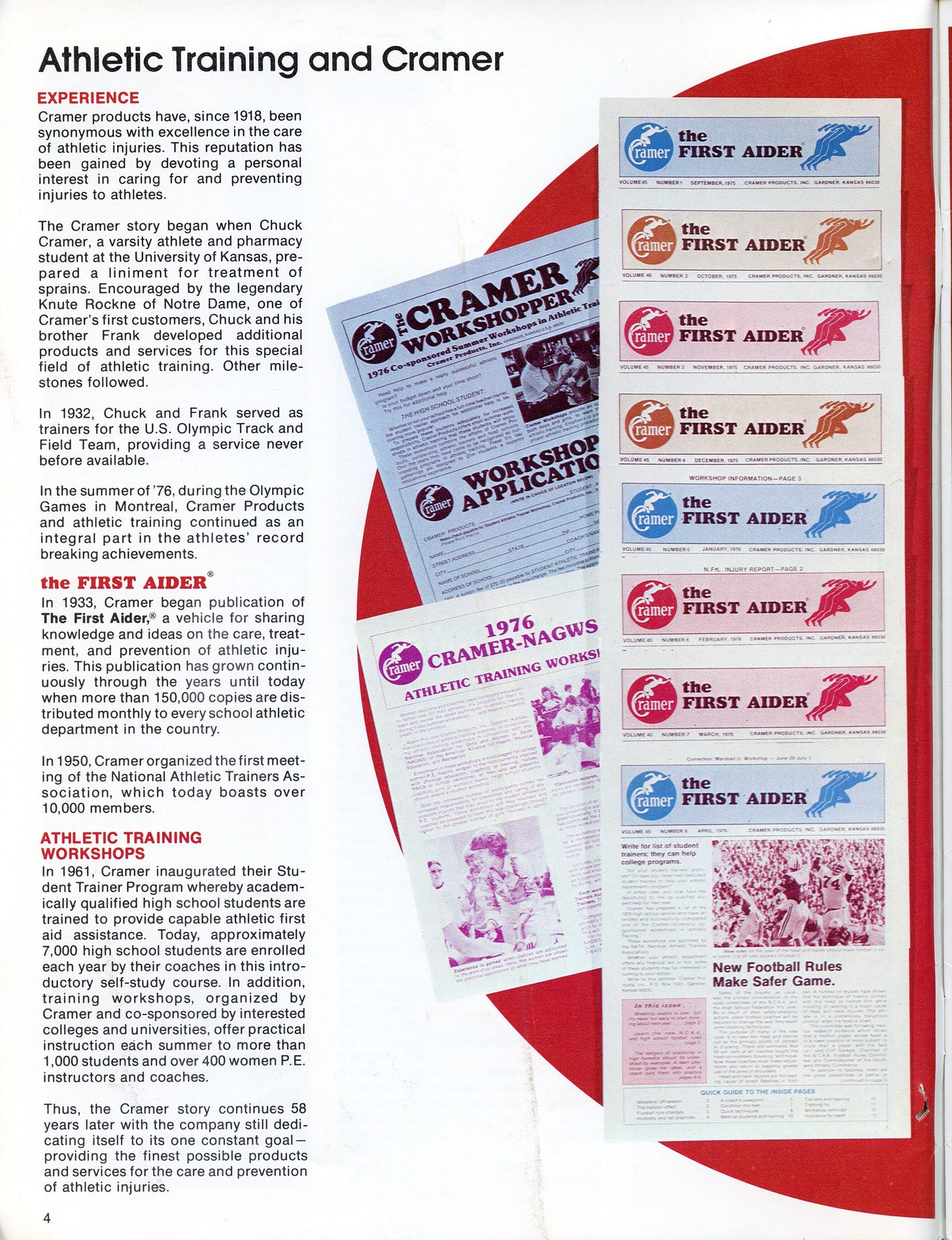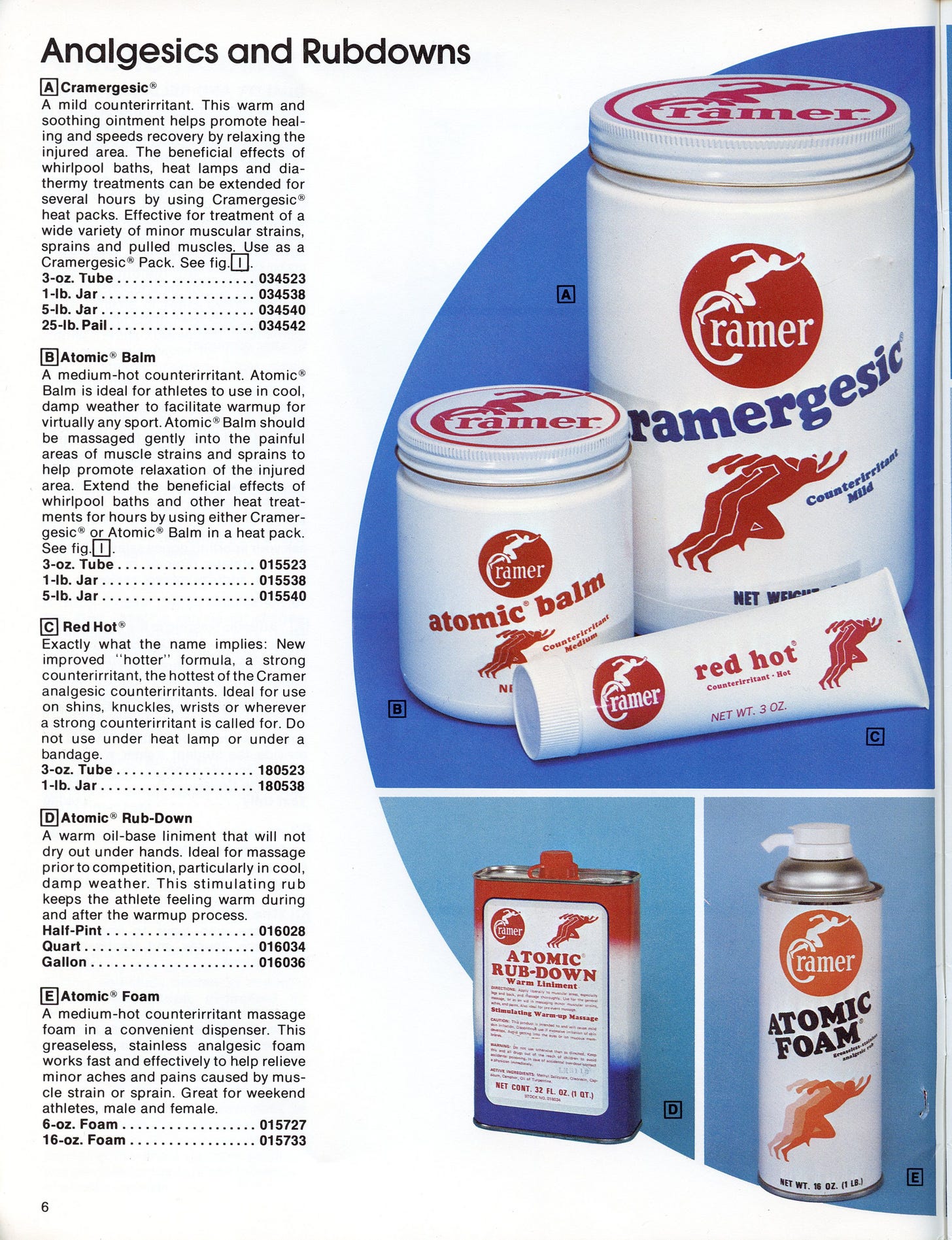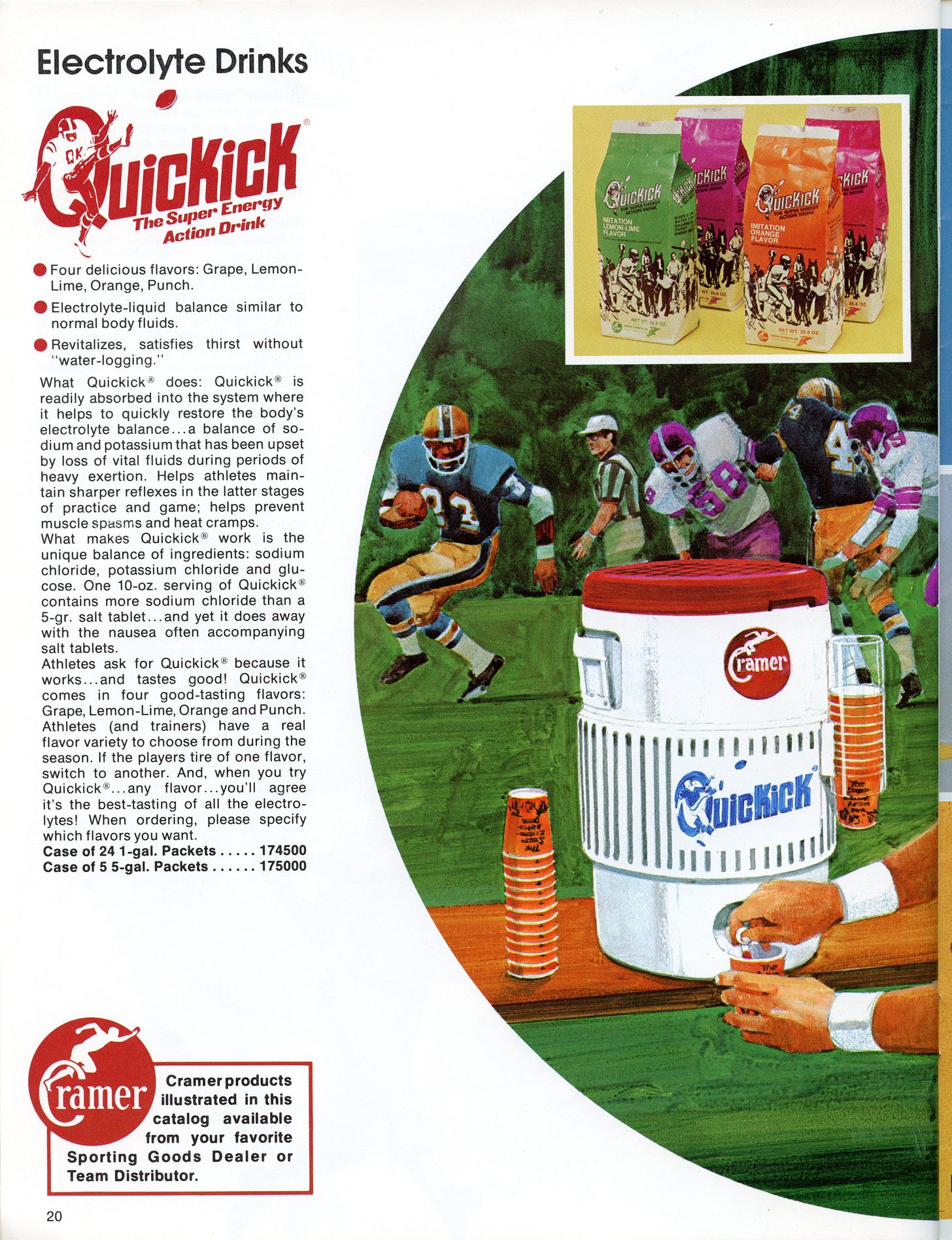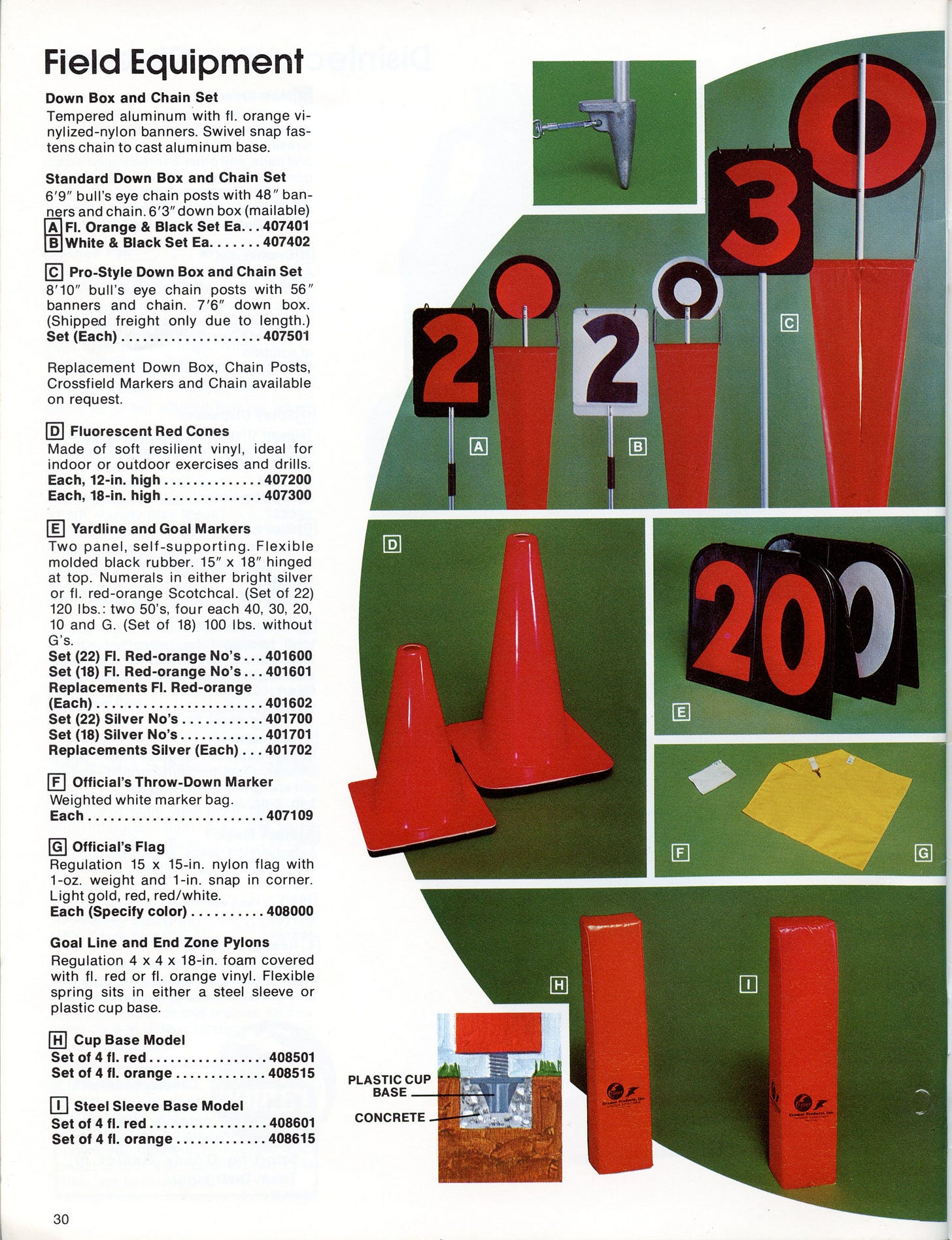Today's Tidbit... Chuck Cramer's Sprained Ankle
You may not have heard of Chuck Cramer, who played football for Gardner High School in Kansas in the years immediately after the forward pass became legal. You also may not have heard of Chuck Cramer, who lettered in track at Kansas by pole vaulting 11' 3" in a meet against Missouri. That was back when pole vaulters used bamboo poles, fell into sawdust pits, and a 12' 0" vault earned an invitation to the Olympic Trials.
Still, you are familiar with Chuck's life work, which began when he landed awkwardly while vaulting and sprained his ankle. Told he would be out of the lineup for weeks, he used his emerging pharmacist skills to create a liniment to hasten his recovery. It worked, allowing him to return to vaulting two weeks later.
After graduating from Kansas in 1912, Cramer returned to Gardner, eventually purchasing a drug store. There, he continued working on his liniment and slowly began marketing it to drug stores and college teams across eastern Kansas. Since then, if you have been in an athletic training room, you have encountered Chuck Cramer through his Cramer Sports Medicine products.

Cramer sold the drug store in 1922 and leased another storefront as his factory, expanding his product line over the years to the full range of athletic training supplies. While expanding the business and presumably making piles of money, Cramer helped professionalize the athletic training industry, including founding the National Athletic Trainers Association in 1951.
Fifty-some years after founding the company and nearly fifty years from today, Cramer published their 1977 Fall and Winter catalog.
Among the items touted was their First Aider publication, which they began publishing in 1933 after working as trainers at the 1932 Olympics. By 1977, they distributed more than 150,000 copies of the First Aider per month.
Comparing the 1977 catalog to their current website, they still produce many of the same products they sold in 1977, including various analgesics. Their Atomic Rub-Down was the only liniment they still produced in 1977, though it is no longer on the market.
More interesting are the products from the 1977 catalog that are no longer among Cramer's offerings and that you might not associate with the company. For example, Cramer's Pro-Guard face masks used a patented design so trainers could safely remove the face mask of a player who suffered a face, head, or neck injury.
Likewise, Cramer's Quickick electrolyte drink sounds much like the Gatorade products that revolutionized sports hydration in the 1960s. Had things turned out differently, we might reward coaches today with Quickick rather than Gatorade showers.
Finally, Cramer sold down markers, pylons, and the vests worn by chain crews, a product grouping that seems like a stretch. However, their athletic department clients would have purchased those products along with the training supplies, so it added one more thing to the sales reps' bag.
Cramer Sports Medicine seems to be doing quite well in the market they helped start 100 years ago, and to think it all started by spraining an ankle in a sawdust pit.
Click Support Football Archaeology for options to support this site beyond a free subscription.









I took Cramer,s trainer course by mail in 1966 to be a certified as a trainer for my high school basketball team. Many of the skills I learned I have used over the next 59 years. I did play football in college and found that Atomic Balm was always being put in some unsuspecting poor soul’s jock strap right before practice.
Great write up of history